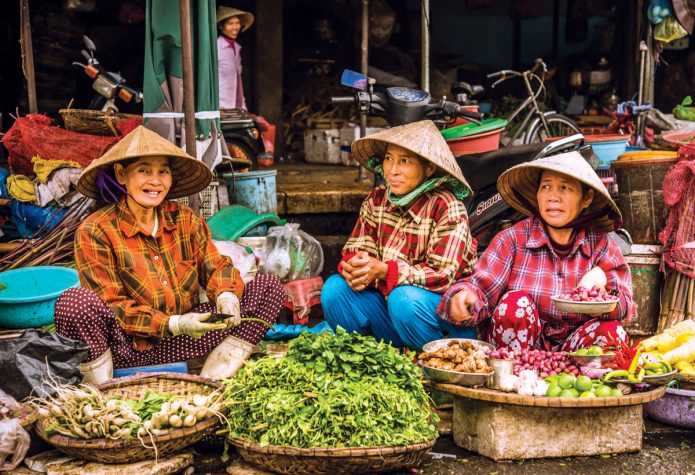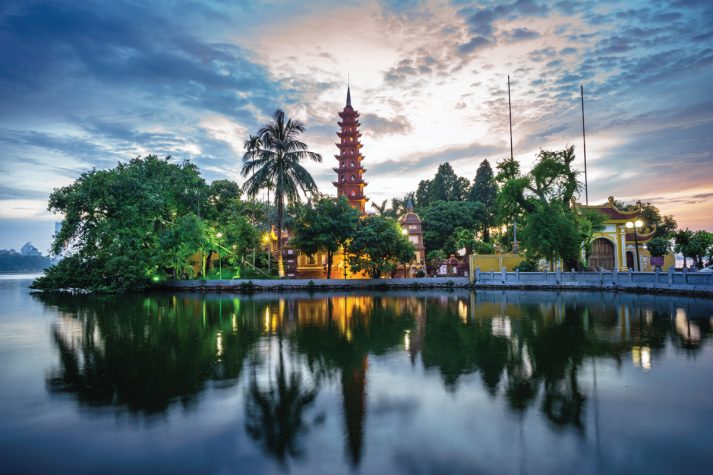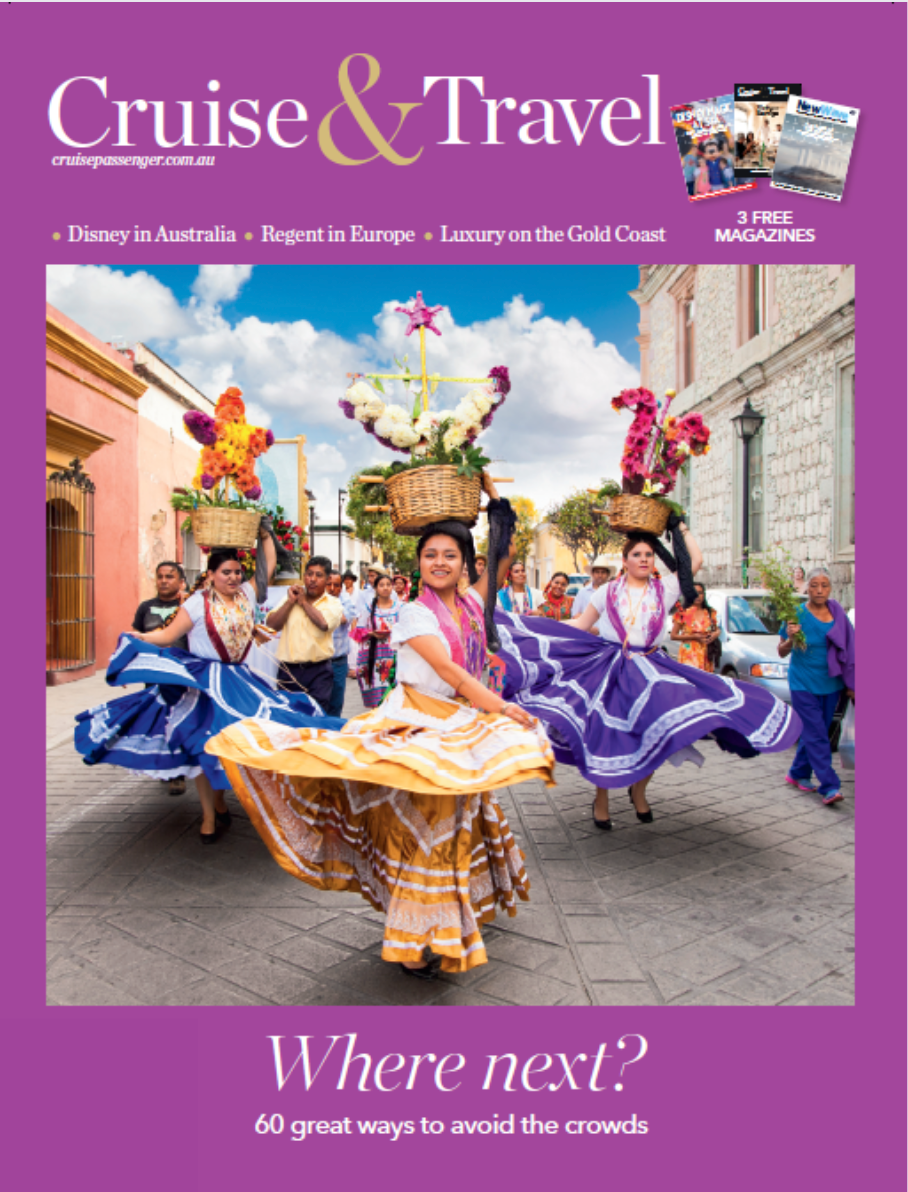Is Vietnam Asia’s next big thing in river cruising?
Vietnam has made amazing strides as a tourist destination in the last five years. Now, it’s neck and neck with Thailand as Southeast Asia’s hotspot.
Stand in the centre of Ho Chi Minh City (still Saigon to many locals and foreign tourists) and you will understand why Vietnam is a country on the move.
They are installing a new light rail system. The Mandarin Oriental Group is building a brand new hotel. Everywhere, the results of investment dollars are turning the city into a magnet for Asian tourism.
Vietnam has always been a heady mix of French and Vietnamese cultures set in a fabulously scenic countryside. Now, they’ve added international shopping, hotels and cuisines.

Vietnam is both compelling and charming, with its mega cities and hill-tribe villages. Over the last few decades, it has managed to emerge from its complicated and violent history as one of the top tourist destinations in the region.
More than 11 million international tourists visited the country this year – an increase of 22 per cent over the previous year.
In the dynamic cities of Hanoi and Ho Chi Minh City, French baguettes and croissants are happily sold alongside the more traditional local staple pho (beef noodle soup).
Along the broad, tree-lined boulevards with grand state buildings dating back to the French colonial period, a tsunami of motorcycles flows at all hours.
Legacy of colonial architecture
The colonialists left a rich architectural legacy. In Ho Chi Minh, the wide boulevards are reminiscent of Paris, lined with such jewels such as the Opera House, fashioned after the Petit Palais, and the grand Central Post Office, designed by Gustave Eiffel (better known for his Parisian namesake tower). The French also left the Notre Dame Cathedral and the grand Hotel de Ville.
Ho Chi Minh is the largest city in Vietnam and the engine driving the country’s current economic resurgence.
It is city of surprises – the madness of the city’s traffic is countered by tranquil pagodas, peaceful parks and local neighbourhoods down tiny alleyways. Life is lived in public – on the back of motorcycles, on sidewalks and even at home, where many living rooms open onto the street.
Cafes and tree-lined boulevards
In Hanoi, too, pavements cafes, French architecture, tree-lined boulevards and narrow streets form the cityscape.
Many visitors make Hoan Kiem district in the CBD around Hoan Kiem Lake, their hub. The area is also home to charming streets of the Old Quarter where more superb French architecture abounds.
Explore the Old Quarter on foot and experience the hustle and bustle of the city’s historic and commercial neighbourhood. Walk the maze of back streets where you will find a diversity of shops, craftsmen, restaurants and street vendors at every turn.

Historic Hoi An is full of charm
Historic Hoi An is one of Vietnam’s most delightful and charming towns. A World Heritage site sitting pretty on the Perfume River, Hoi An has preserved its incredible legacy of Japanese merchant houses, Chinese temples and ancient tea warehouses.
A popular activity for tourists is strolling the streets and admiring the faded canary yellow homes and colourful silk lanterns. There is also a 400-year-old Japanese covered bridge with a fascinating story and the Assembly Hall of the Chaozhou Chinese Congregation with its outstanding wood carvings.
Hoi An is regarded as the tailoring capital of Vietnam, a city where you can have a suit or a silk dress handmade in a day – haggle hard to get the right price.
Three hours north of Hoi An is the imperial city of Hue, the country’s capital until 1945. Hue was granted a UNESCO World Heritage status to preserve its cultural treasures such as tombs, pagodas and palaces. The town is strewn with royal tombs, built more than 200 years ago but many are sadly crumbling.
You can visit the Imperial Enclosure, a citadel-within-a citadel. It houses the emperor’s residence, temples and palaces. Unfortunately the enclosure was badly bombed – during what they call the American War, Hue suffered due to its proximity to the Demilitarised Zone, particularly during the Tet Offensive of 1968 – and only 20 of its 148 buildings survived.
Must-see Ha Long Bay
The biggest attraction of North Vietnam is Ha Long Bay, a truly remarkable natural wonder. The bay is scattered with nearly 2,000 gumdrop-shaped limestone islands and islets, most of which are uninhabited. The erosive power of wind and sea has created caverns and dramatic cliffs, but according to popular legend, the limestone islands were created by dragons who breathed out jewels to prevent enemy ships from coming ashore.
Take a gentle cruise around the bay in an authentic Vietnamese junk topped with a fan-shaped sail, watch the sunset and stay at Cat Ba island where you can hike, rock climb and take in the stunning view of the bay.
Taste of amazing flavours of Vietnamese food
Vietnamese food is incredibly subtle in flavour and amazing in diversity. Chinese flavours influence the soups of the north, spices spark up southern cuisine and herbs are generously used in the dishes from the central coastline.
For breakfast, have steamed rice rolls stuffed with minced pork and mushrooms and served with a heap of bean sprouts and chopped fresh herbs. Tuck into a steaming bowl of beef or chicken pho, picking the leaves off the fresh basil and coriander to add to the broth to release their aromatic flavours. Walk into any market and you’ll see stalls heaving with tiny clams, baskets of chillies and limes, sweet and delicious jackfruit, plumes of banana flower, bunches of red rambutans and sacks of lotus seeds for making puddings.

Serious about coffee
Vietnam is the world’s second largest coffee exporter and Vietnamese locals are serious coffee drinkers. Everywhere you turn you will see people at street-side cafes watching the world go by while nursing a glass of ca phe, coffee with sweetened condensed milk. Strong, flavourful Vietnamese coffee certainly raises pulses. There’s also egg coffee where the egg yolk is whipped with condensed milk into a froth. Think of it as a Vietnamese take on tiramisu. Egg coffee was first introduced in the 1940s when milk was scarce and eggs were a convenient replacement.
Hanoi remains the undisputed centre of café culture in Vietnam. There is even a dedicated coffee street in Hanoi’s historic Hai Ba Trung district with more cafes than anywhere else in the country, from family-run shops to chic, fashionable hang-outs.
Temples and pagodas are among Vietnam’s most popular tourist attractions. Ancient temples display distinctly Chinese influences in the north and Hindu origins in the south. In Hanoi, the Tran Quoc Pagoda is the oldest the city, dating back to the 6th century. The main pagoda is 15 metres high and surrounding buildings include an incense burning house and museum housing historic relics.
There is also the Temple of Literature, one of Hanoi’s most picturesque attractions. Built in 1070, it houses a lake. of literature, pavilions and courtyards once used by royalty of the Ly and Tran dynasties. In Ho Chi Minh City, locals and tourists alike head for the impressive Emperor Jade Pagoda, also known as Tortoise Pagoda, located in District 3.
Vietnam’s popularity is growing by the day, so now is the time to go and explore this Asian power.

